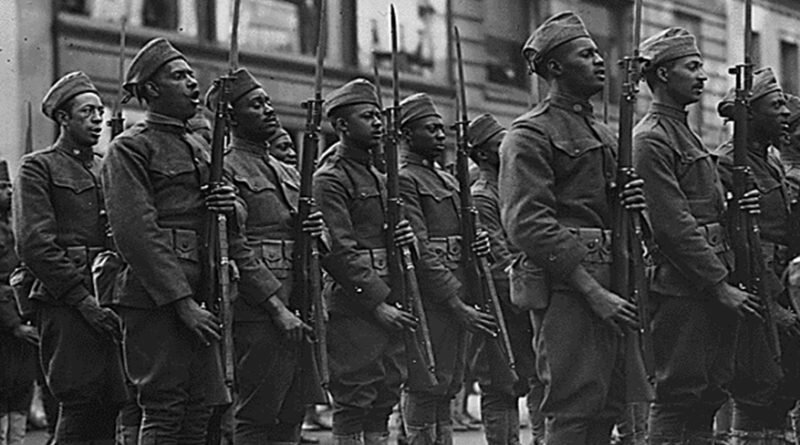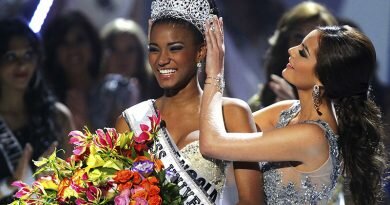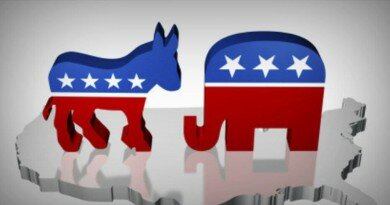Black Veterans’ Treatment By America Exposed
“Lynching In America: Targeting Black Veterans,” a book which explores the degree of physical violence and humiliation Black veterans faced.
The nation celebrated Veterans Day on Friday, saluting family, friends and neighbors who fought in every single war for the country, News One states. But America must also acknowledge the treatment of its Black veterans, many of whom were brutalized and abused after returning home from service.
The Equal Justice Initiative recently released “Lynching in America: Targeting Black Veterans,” a 52-page report which painstakingly “documents the culture of targeted physical violence and social humiliation that Black veterans were forced to confront during the late 19th and early 20th centuries, despite their hopes of achieving racial equality through the patriotic commitment of military service.”
Lynching in America: Targeting Black Veterans builds upon the comprehensive seminal report on the era of racial terror lynchings and violence that EJI published last year. Documenting over 4,000 lynchings of African Americans throughout the South between 1877 and 1950, the 2015 report, Lynching in America: Confronting the Legacy of Racial Terror, explored the ways in which racial terrorism profoundly shaped the nation’s demographics and reinforced a myth of racial inferiority and a legacy of racial inequality that is readily apparent in our criminal justice system today.
“The disproportionate abuse and assaults against black veterans have never been fully acknowledged. This report highlights the particular challenges endured by black veterans in the hope that our nation can better confront the legacy of this violence and terror,” EJI Director Bryan Stevenson said. “No community is more deserving of recognition and acknowledgment than those black men and women veterans who bravely risked their lives to defend this country’s freedom, only to have their own freedom denied and threatened because of racial bigotry.”
Such sentiments persisted after World War I, contributing to the climate that created the “Red Summer” of 1919, when white mobs rose up against black communities across 25 cities in almost every region of the U.S.; among the victims were 13 Black veterans who were lynched, reported by Citylab. This was the kind of racial terror that drove African Americans by the millions into northern cities during the early 20th century. Instead of sanctuaries from the violence of the rural South, cities were places where African Americans first felt the fhwap of racism after returning from the battlefield. They arrived pre-branded as criminals by the white families who already lived there, which led to even more race riots, often with the police. The EJI report lists dozens of stories of black veterans who were beaten, mobbed, maimed, and lynched, often for little other reason than daring to walk on city sidewalks with their white neighbors.
Rather than continuing to duke it out with African Americans over space and proximity (or learning how to live together), white families simply decamped for the growing suburbs. Households with white war veterans were able to do this rather easily with the help of the G.I. Bill, which showered all kinds of federal grants, loans, and tax cuts to help their urban escapes. But, as the report details, African American veterans weren’t able to capitalize on any of these new programs:
Racial discrimination pervaded veterans’ programs, but the effects were particularly acute in the provision of home loans. Title III of the G.I. Bill made veterans eligible for low‐interest home loans with no down payment. Very few black veterans benefitted from Title III because, while the loans were guaranteed by the VA, they required cooperation from local banks. This meant that veterans first had to convince local banks to lend to them—which proved a daunting task for black veterans because the overwhelming majority of banks routinely denied loans to black applicants.
Home ownership was the primary driver for post‐war economic security and wealth accumulation, and it spurred the creation and growth of suburban white America. The G.I. Bill’s failure to provide similar uplift for black veterans and their families was evident from the start. A survey of 13 Mississippi cities found that African Americans received only 2 of the 3229 home, business, and farm loans administered by the VA in 1947. The Pittsburgh Courier charged that “the veterans’ program had completely failed veterans of minority races.” Once again, black people were excluded from the benefits of military service, and the hopes of black veterans and their communities were crushed by an unyielding racism that barred their entry into the middle class.
This has been a pretty consistent pattern after just about every American conflict, including those in Vietnam and Iraq: African Americans are allowed to take one step toward freedom, but then get knocked back at least two steps. It’s Newton’s Third Law of Motion when it comes to racial balancing acts.
“Despite the overwhelming injustice and horrific attacks black veterans suffered during the era of racial terror,” reads the report, “they remained determined to fight at home for what they had helped to achieve abroad.”
This is a fight that still continues today, which is why black vets are especially deserving of a salute this Veteran’s Day.
America’s maltreatment of Black people isn’t new to many. But what is even more shameful is how the country treats the very people who put their lives on the line for the nation. Those Black veterans were rather paid back with cruelty and shame. Unfortunately, the history is repeating itself in the present life of Black veterans in the United States. But now it has taken a different form such us unpaid compensations, or endless lines for medical treatment. Traveling for hundreds of kilometers for life-saving surgery can be worth than death for sick old men, you know.






